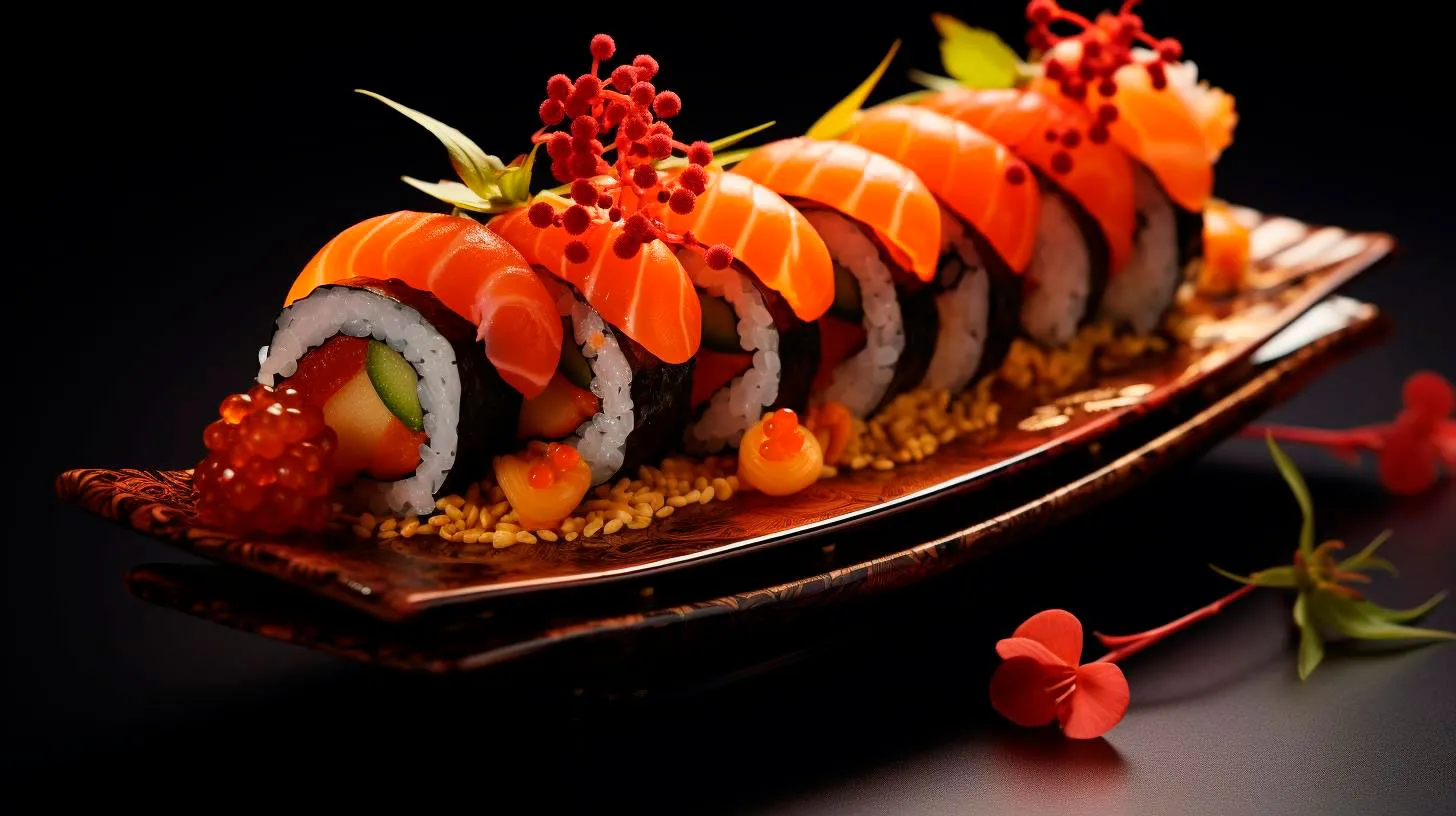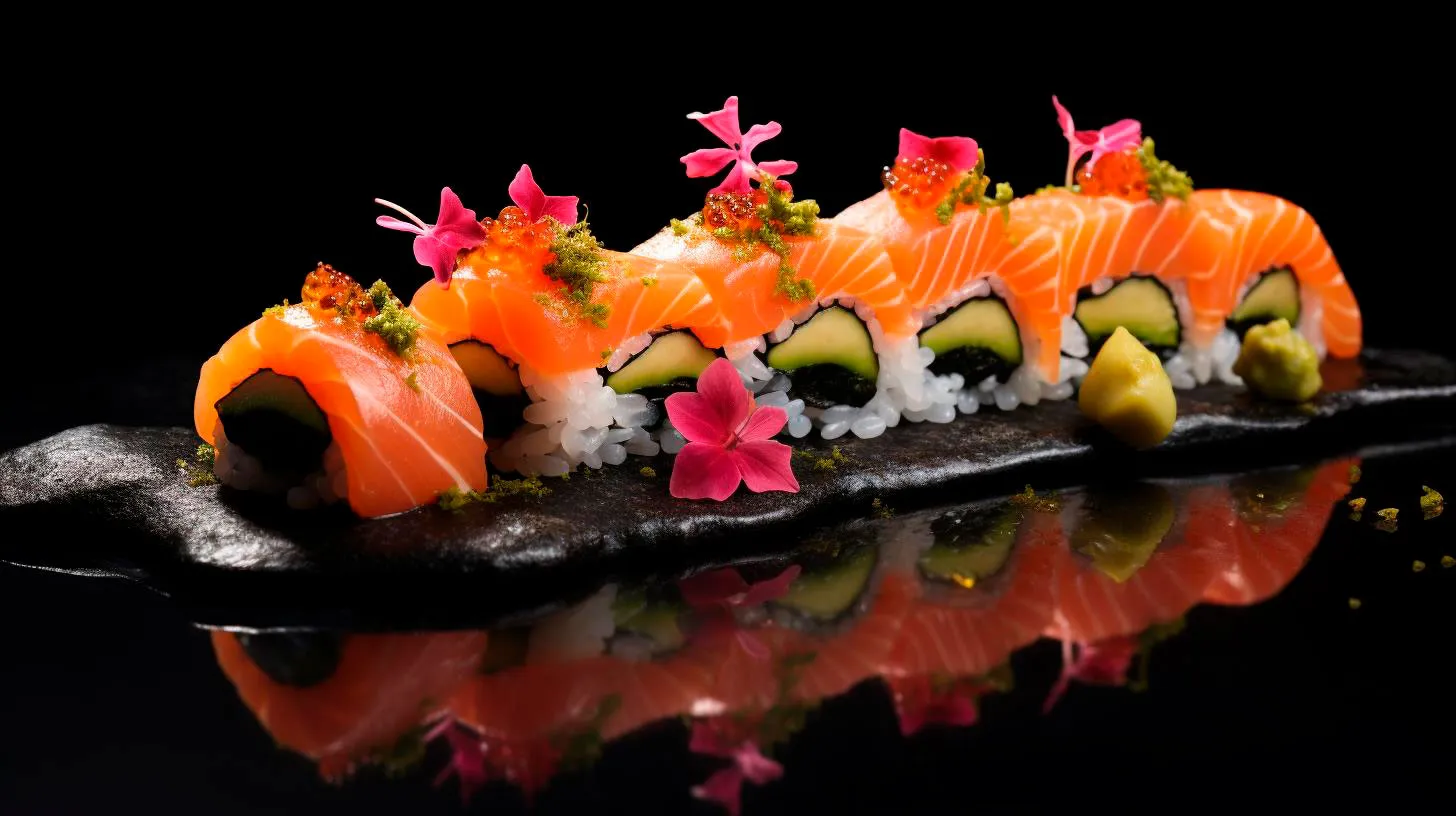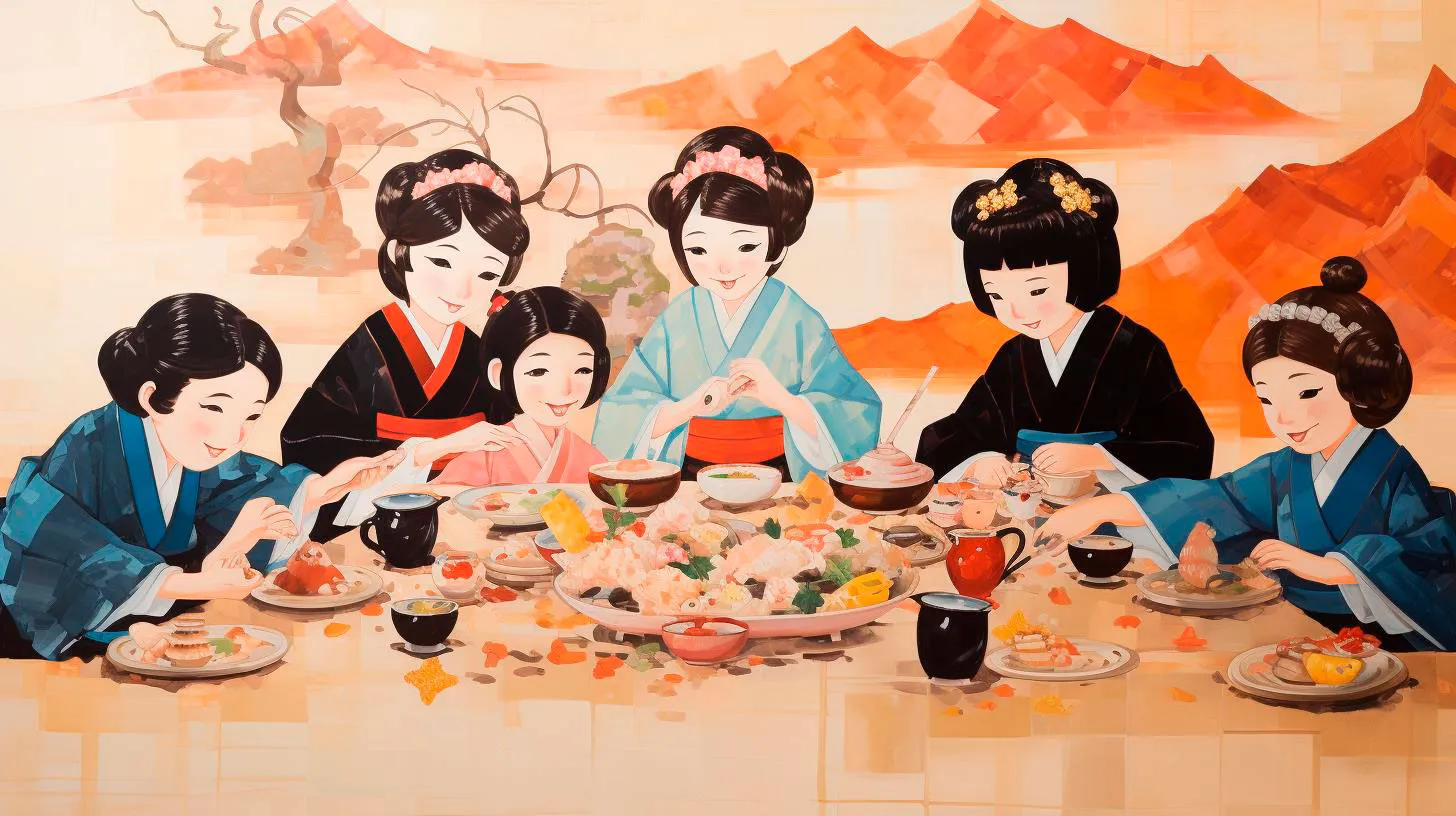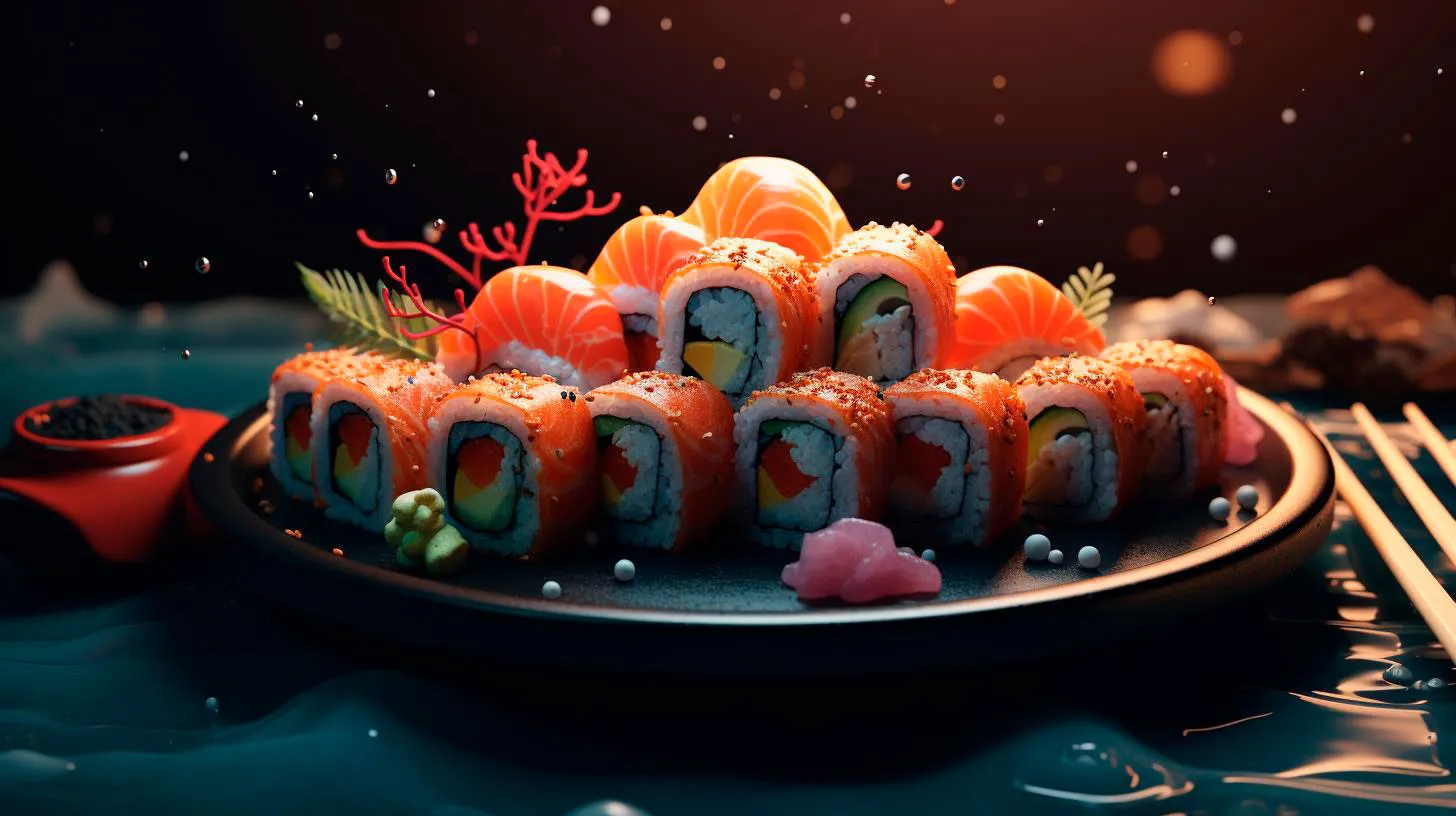The Art of Sushi Making: Unveiling Japan’s Culinary Mastery
Sushi making represents the rich traditions, meticulous techniques, and cultural heritage of Japan. In this blog post, we’ll delve into the intricate world of sushi making, uncovering its secrets and exploring why it has gained global recognition.
The Intricacies of Sushi Making
Sushi making is a craft that requires precision, skill, and years of practice. The process begins with selecting the freshest ingredients, ensuring their quality and taste are unparalleled. The rice used in sushi must be cooked perfectly, achieving a delicate balance of stickiness and moisture. The artistry lies in the meticulous hand-rolling of the sushi, creating visually stunning and flavorsome delicacies that tantalize the senses.
Key takeaways:
- Selecting the finest ingredients is crucial for creating exceptional sushi.
- Skillful rice preparation is essential to achieve the perfect texture.
- The artistry of sushi making lies in the careful hand-rolling process.
The Beauty of Tradition
At the heart of sushi making is the preservation of tradition. This ancient culinary art has been passed down through generations, with each sushi master adding their unique touch. From the traditional wooden sushi mat, known as a makisu, to the precise knife techniques, every aspect of sushi making pays homage to Japan’s rich cultural heritage.
Sushi chefs undergo years of rigorous training, learning the importance of precision and attention to detail. They master the intricate knife work, ensuring each piece is cut flawlessly to elevate the taste and presentation. The beauty of tradition is infused into every aspect of sushi making, resulting in a culinary experience like no other.
Key takeaways:
- Sushi making is deeply rooted in Japanese cultural heritage.
- Chefs undergo extensive training to master the precision required.
- Attention to detail and traditional techniques elevate the sushi experience.
The Healthful Benefits of Sushi
Beyond its exquisite taste, sushi offers an array of health benefits. The use of fresh fish and seafood provides an excellent source of omega-3 fatty acids, promoting heart health and reducing the risk of certain diseases. Additionally, sushi is low in saturated fats and cholesterol, making it a healthier alternative to many other cuisines.
The inclusion of a variety of vegetables in sushi provides essential vitamins and minerals. Nori, the sea vegetable used to wrap sushi, is rich in iodine and fiber. Sushi’s emphasis on natural ingredients and balanced flavors makes it not only a culinary delight but also a nutritious choice.
Key takeaways:
- Sushi is rich in omega-3 fatty acids, promoting heart health.
- Low in saturated fats and cholesterol, sushi is a healthier cuisine option.
- Sushi’s variety of vegetables and seaweed offer essential nutrients.
Sushi’s Global Popularity
The art of sushi making has transcended borders and gained widespread popularity around the world. According to recent statistics, the global sushi market is projected to reach a staggering $22 billion by 2025, a testament to its allure. The rise in popularity can be attributed to several factors, including globalization, increased travel, and a growing interest in diverse culinary experiences.
Sushi’s ability to adapt to varying palates and dietary preferences has contributed to its global appeal. Alongside traditional sushi, modern interpretations with creative flavor combinations have emerged, catering to the evolving tastes of a diverse audience. Sushi has become more accessible, available in restaurants, food trucks, and even supermarkets, ensuring its presence in everyday dining.
Key takeaways:
- The global sushi market is projected to reach $22 billion by 2025.
- Sushi’s popularity is fueled by globalization and increased travel.
- Modern interpretations cater to diverse palates and dietary preferences.
In Conclusion
Sushi making unveils Japan’s culinary mastery, showcasing a harmonious blend of tradition, culture, and exceptional taste. The meticulous preparation, focus on quality ingredients, and devotion to preserving ancient techniques make sushi a truly remarkable art form. Whether you’re a sushi aficionado or new to this culinary adventure, exploring the world of sushi making is a journey worth embarking upon.
Exploring Japan’s Rich Sushi Heritage: From Edo to Present Day
In this article, we dive into the intriguing history, distinctive types, and cultural significance of sushi in Japan, from its humble origins in Edo to the present day.
An Ancient Art Transcending Time
Sushi has its roots in ancient Japan, and its beginnings can be traced back to the 8th century. Initially, sushi was a process of preserving fish by fermenting it with salt and rice. This method helped preserve the fish for extended periods, allowing it to be consumed even when fresh fish was scarce. Over time, this technique evolved, and sushi transformed into an art form.
In the 17th century, during the Edo period, the term “Edomae sushi” was coined. Edomae was the name for Tokyo before it became Japan’s capital, and it translates to “in front of Edo.” Back then, sushi was simple, made from fish caught from Tokyo Bay and seasoned with rice and soy sauce. These early forms of sushi were served in small food stalls. However, as the popularity of sushi grew, so did the craftsmanship behind it.
During the Meiji period, sushi chefs relocated from Tokyo Bay to riverside areas to source fresher fish. The introduction of refrigeration and advancements in transportation allowed sushi to be enjoyed beyond its local origins, reaching a broader audience throughout Japan.
Glorious Sushi Varieties: Nigiri, Maki, and More
When exploring sushi, it’s essential to understand the different varieties that contribute to its diverse range of flavors and presentations. Here are some of the most popular types:
- Nigiri: Nigiri sushi consists of vinegared rice served with a slice of raw fish or seafood on top. It showcases the perfect balance between rice texture and the freshness of the toppings.
- Maki: Maki sushi is perhaps the most recognized type. It consists of sushi rice rolled in seaweed (nori) with various ingredients such as fish, vegetables, or even egg in the center. The roll is then sliced into bite-sized pieces.
- Sashimi: Although not technically sushi, sashimi plays a significant role in Japanese cuisine. It refers to thinly sliced raw fish or seafood served without rice. The focus of sashimi is solely on the quality and freshness of the ingredients.
- Chirashi: Chirashi sushi is a beautiful bowl of sushi rice topped with an assortment of colorful ingredients such as sashimi, vegetables, and tamagoyaki (Japanese rolled omelet).
The Cultural Significance of Sushi
Sushi isn’t just about food—it holds deep cultural significance in Japan. Here are a few points emphasizing the cultural importance of sushi:
- In Japan, sushi is often associated with celebrations and special occasions.
- Sushi-making is considered an art form in Japanese cuisine, requiring years of training and mastery.
- Respect and appreciation for the ingredients are at the core of sushi culture.
Key Takeaways
Sushi has come a long way from its humble beginnings as a preservation technique to becoming an internationally adored cuisine. Here are the key takeaways to keep in mind:
- Sushi originated in ancient Japan as a way to preserve fish.
- During the Edo period, sushi gained popularity in Tokyo as Edomae sushi.
- Various types of sushi, such as nigiri, maki, and sashimi, offer unique flavors and presentations.
- Sushi-making requires skill, precision, and immense respect for the ingredients.
- Sushi holds significant cultural importance in Japan and is often associated with special occasions.
As you embark on your sushi journey, remember that each piece represents centuries of craftsmanship and dedication. So the next time you savor a delicate slice of sushi, take a moment to appreciate the rich heritage and cultural legacy behind it.
Tantalizing Tastebuds Experiencing the Authentic Flavors of Japanese Sushi
So, let’s dive into the fascinating world of sushi and discover the authentic flavors that tantalize our tastebuds.
The Art of Sushi Making
Sushi-making is an art form that requires skill, precision, and attention to detail. It originated in Japan during the eighth century and has evolved over the years, encompassing various techniques and styles. The key components of sushi are the vinegared rice and the fresh ingredients, including fish, seafood, and vegetables.
Master sushi chefs spend years perfecting their craft. They carefully select the freshest ingredients, paying close attention to factors such as origin, quality, and sustainability. Every slice of fish, every grain of rice is meticulously crafted to create a harmonious blend of flavors and textures.
Sushi Styles and Types
Sushi offers a wide variety of styles and types to cater to different tastes and preferences. Some popular styles include:
- Nigiri: This classic style consists of a small mound of vinegared rice topped with a slice of raw or cooked fish.
- Maki: Maki sushi is created by rolling the rice and other ingredients in a sheet of seaweed (nori) and then sliced into bite-sized pieces.
- Sashimi: Sashimi is not technically sushi, but it is an integral part of Japanese cuisine. It refers to thinly sliced raw fish or seafood served without rice.
- Temaki: Also known as hand rolls, temaki are cone-shaped rolls filled with a variety of ingredients and wrapped with nori.
These are just a few examples among the many exquisite styles available. Each offers a unique combination of flavors and textures, ensuring there’s something for everyone.
The Advantages of Authentic Sushi
When it comes to sushi, authenticity plays a vital role in enhancing the dining experience. Here are some advantages of indulging in authentic Japanese sushi:
- Freshness: Authentic sushi is known for its unparalleled freshness. The premium ingredients and skilled craftsmanship ensure that every bite is bursting with delightful flavors.
- Health Benefits: Sushi is often considered a healthy choice due to its low-fat content and high nutritional value. The inclusion of omega-3 fatty acids in fish offers various health benefits, including improved heart health and brain function.
- Cultural Experience: By experiencing authentic sushi, you get a glimpse into Japanese culture and traditions. It’s a culinary journey that allows you to appreciate the artistry and attention to detail that goes into every dish.
- Uniqueness: Authentic sushi showcases the distinct flavors of Japan. From the delicate taste of fatty tuna (toro) to the savory umami flavor of soy sauce, each ingredient adds its own unique element to the overall experience.
Key Takeaways
As we conclude our exploration of Japanese sushi, here are some key takeaways to remember:
- A passion for authenticity drives the art of sushi making.
- Sushi comes in various styles, offering a diverse range of flavors and textures.
- Authentic sushi is not only delicious but also provides health benefits.
- Savoring authentic sushi is an opportunity to immerse yourself in Japanese culture.
Next time you find yourself craving a culinary adventure, head to a reputable Japanese restaurant and embark on a journey to experience the authentic flavors of Japanese sushi. Indulge your tastebuds and let the rich tapestry of flavors transport you to the enchanting world of Japan’s culinary heritage!
From Tokyo to Osaka: Unraveling the Unique Sushi Styles across Japan
In this article, we will explore the fascinating contrasts between Tokyo and Osaka’s sushi cultures, shedding light on the key differences that make each style truly special.
Tokyo: The Epitome of Elegance
Tokyo, the bustling capital city of Japan, is renowned for its refined and sophisticated sushi. With an emphasis on simplicity, Tokyo-style sushi aims to showcase the natural flavors of the ingredients. Here are some defining characteristics of Tokyo’s sushi:
- Nigiri Focus: Tokyo-style sushi tends to prioritize nigiri, which consists of fresh fish or seafood placed on top of vinegar-seasoned rice. The sushi chef’s skill lies in selecting the perfect combination of fish and rice, allowing them to harmonize effortlessly.
- Quality Ingredients: Freshness is paramount in Tokyo sushi. Chefs meticulously source the finest seafood from Tokyo’s bustling fish markets, such as Tsukiji Market, ensuring unparalleled taste and texture.
- Simplicity in Presentation: Tokyo sushi is known for its minimalist approach to presentation. The focus is on the quality of the ingredients rather than elaborate garnishes or sauces, allowing the true essence of the sushi to shine through.
With its dedication to perfection and attention to detail, Tokyo-style sushi has earned a reputation as one of the world’s most exquisite culinary experiences. It’s no wonder that sushi-lovers from around the globe flock to Tokyo’s world-famous sushi restaurants.
Osaka: Bold and Flavorful
If Tokyo represents elegance, then Osaka is the lively and rebellious sibling of the sushi world. Osaka-style sushi, also known as “Osaka-zushi,” celebrates bold flavors and playful combinations. Here’s a glimpse into what sets Osaka’s sushi apart:
- Pressed Sushi: Unlike Tokyo-style nigiri, Osaka’s sushi predominantly features pressed sushi, known as “Oshizushi” in Japanese. Pressed sushi involves packing rice and toppings tightly into a rectangular mold, resulting in visually striking sushi with a variety of delicious fillings.
- Abundance of Condiments: Osaka-style sushi is often accompanied by an array of condiments, such as spicy miso, pickled vegetables, or tangy sauces. These additions create a symphony of flavors, elevating each bite to new heights.
- Creative Combinations: Osaka sushi chefs are known for their innovative and unconventional creations. From unique ingredient pairings to extravagant flavor combinations, Osaka-style sushi embodies the adventurous spirit of the city.
Osaka’s vibrant street food scene and diverse culinary heritage have influenced its sushi style, resulting in a sushi experience unlike any other.
Key Takeaways: A Sushi Journey through Japan
As we journeyed from Tokyo to Osaka, we uncovered two distinct and captivating sushi styles. Here are the key takeaways:
- In Tokyo, nigiri reigns supreme, with a focus on pristine ingredients and elegant simplicity.
- Osaka, on the other hand, offers a more adventurous and bold sushi experience, with pressed sushi showcasing innovative flavor combinations.
- Whether you prefer the refined craftsmanship of Tokyo or the vibrant creativity of Osaka, both styles offer an unforgettable sushi adventure.
From ancient traditions to modern culinary innovations, Japan’s sushi culture continues to captivate food enthusiasts worldwide. So, next time you find yourself in Tokyo or Osaka, make sure to embark on a sushi pilgrimage — it’s an experience that will leave your taste buds tantalized and your heart longing for more.



